People
How One Woman Rallied an Army of Street Artists to Transform One of Venezuela’s Most Dangerous Neighborhoods
Katiuska Olivares has facilitated the creation of more than 50 murals in Petare, one of the most dangerous areas in Caracas.
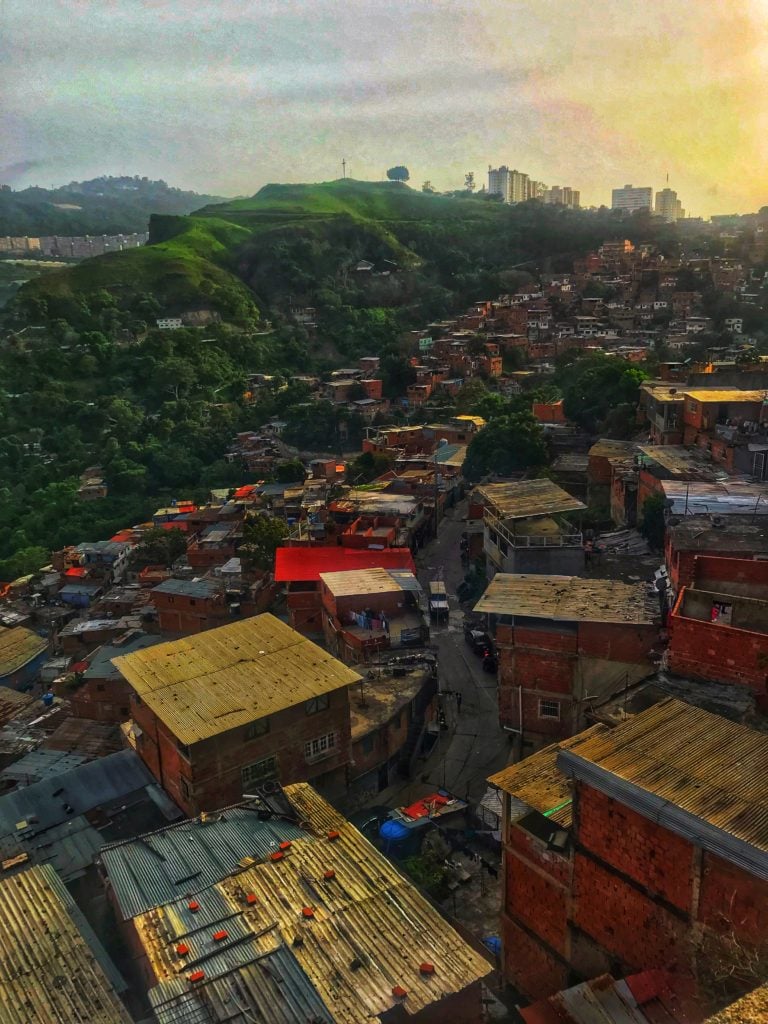
Katiuska Olivares has facilitated the creation of more than 50 murals in Petare, one of the most dangerous areas in Caracas.

“Hey cariño, you look sleepy, where’s your mother?”
Katiuska Olivares gently tussles the curly black hair of a small boy who has walked up to her in the middle of our conversation. He grabs her by the leg and she asks me to give her a minute so she can locate his mother, who lives just down the street. She explains that this is part of her unofficial job here in the barrio. Being a community leader, she says, is basically about looking out for everyone. But the reason I am here is because of a less orthodox role she has taken on: public art organizer.
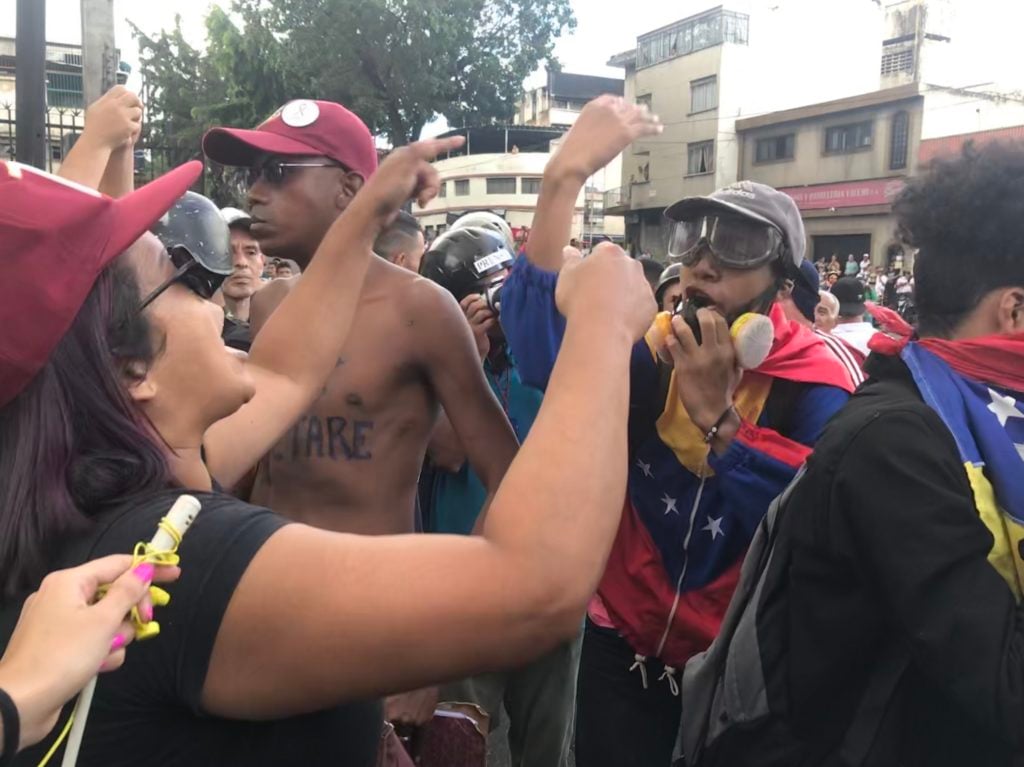
Katiuska Olivares (in foreground) at a rally, protesting violence. Photo courtesy of the author.
Over the past two years, Olivares has helped transform the San Blas Sector of Petare, one of the largest and most dangerous slums in the world, into a street-art hub—a shift that has created lasting change in the neighborhood. “Most of us grew up without any beauty around us—we are a people stuck in survival mode,” she says. “But without beauty, our souls just shrivel up and die.”
It may sound idealistic. But the reality of executing a neighborhood public art program takes very real work. Olivares organizes painters, raises funds, and finds locals to help create more and more murals. She leads the project in partnership with a talented local artist named Fabian Solymar, who is known under his artist name Dagor and, to date, has painted over 50 murals in Barrio Petare.
“I love this country, this city, and I love my neighborhood,” Olivares says. “I have grown up seeing it destroyed, ripped apart by violence, and one day I just had enough and knew I needed to do something—anything—to make it better.”
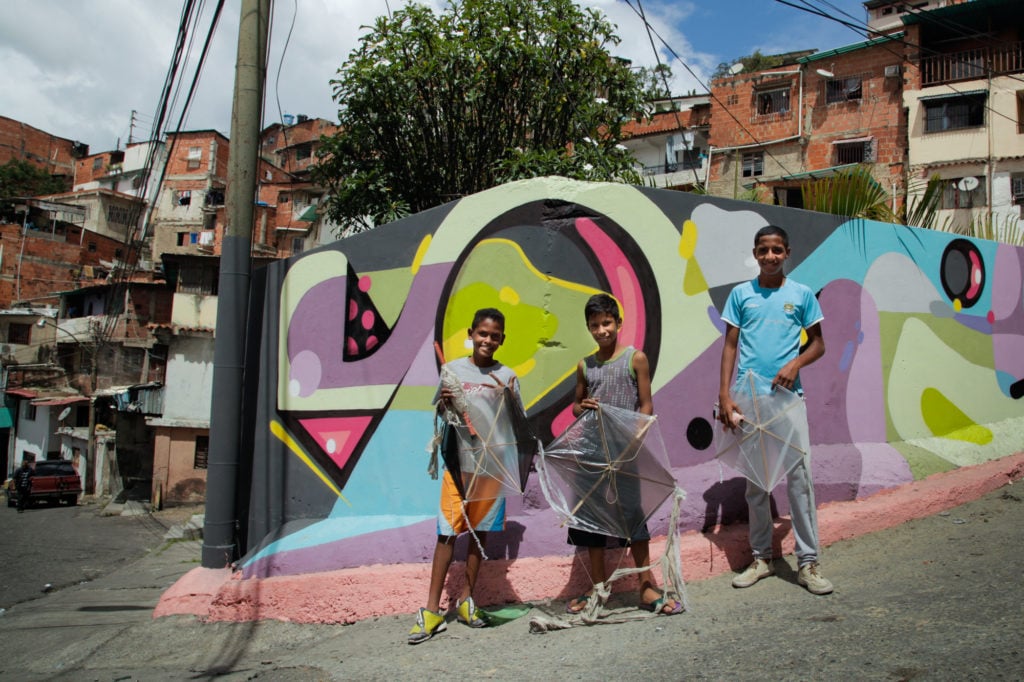
Street artists in training in Petare. Photo courtesy of Luis Carlos Castellano And Fabian Solymar.
Olivares didn’t set out to create a community-engulfing public art initiative. Instead, she started by cleaning—a seemingly simple task of engaging her neighbors in picking up trash in the nearby streets. After about a month, she noticed that when the cans, old pieces of tire, diapers, and plastic no longer piled up outside the houses, there was less additional trash to collect every week. An increased awareness and sense of ownership was setting in.
“So I thought to myself—let’s take this further, using what we have right here, all the creative energy and frustration, and turn it into beauty in these streets,” she says.
It was a small experiment at first, one corner turning into two and three, but the results were almost immediate. This area, as well as as all of Petare, has been plagued with gang violence, drug trafficking, and petty crime. But after the project started, Olivares says, she noticed that the business of the gangs began to move elsewhere, the inhabitants of the community reporting suspicious activity rather than exploiting each other’s weaknesses.
To be sure, the violence has not disappeared entirely: just a few months ago, Olivares’s brother-in-law was shot outside his home; now, her sister and her children are living with her. And the murals are hardly the only factor. The Venezuelan Observatory of Violence, a Caracas-based nonprofit group, estimates homicides have dropped as much as 20 percent over the past three years in the country after climbing every year since 2004.
It’s a counterintuitive effect of the economic crisis: Young men who might otherwise be recruited by gangs—as well as wealthier individuals on whom they might prey—have emigrated elsewhere in search of better prospects. Meanwhile, guns have become difficult to afford.
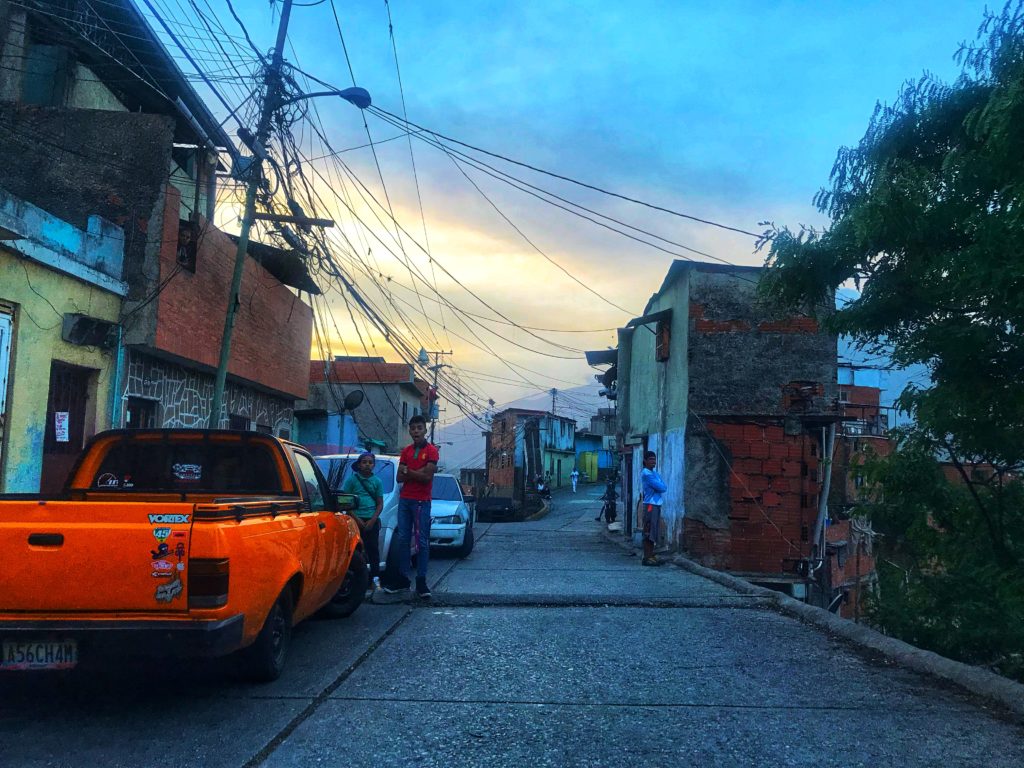
Children in the streets of the slum. Photo: Annika Hernroth-Rothstein.
This shift, coupled with Olivares’s efforts, have made the neighborhood feel decidedly different than it once did. To date, more than 50 murals have been painted as a result of the project, and the bubblegum-style constructivist artworks have become talking points and gathering places in an area where few previously chose to linger.
“The thing about art is that it influences people even when they’re not looking at it, just by it being there,” Olivares notes. “When the kids walk by a mural, this amazing explosion of color and form, on their way to school, it tells them that not only their neighborhood matters, but that they matter.”
As Olivares and I walk down the street from her house, she is constantly greeted by those passing by, who offer hugs and ask advice about this and that. I ask her how someone so young—and a women and that—has become such a respected figure in her community, and she tells me it all comes down to her iron will to remain independent.
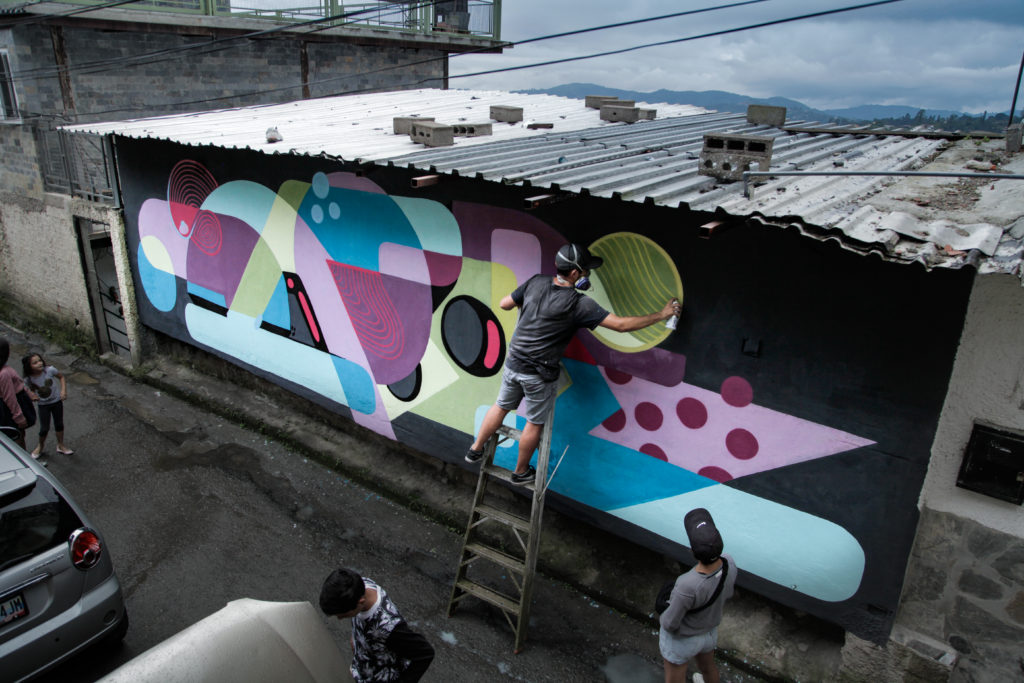
Artists at work in Petare. Photo courtesy of Luis Carlos Castellano And Fabian Solymar.
“I have consistently refused to accept any help from the government, no clap-box, no nothing, and I don’t even register for a government identity card,” she says. “Anyone who lives in my house has to follow that same rule, because it is all about independence. I don’t want handouts and what I do for my community, I do with my community.”
The decision to operate independently of the government is a controversial and potentially dangerous one in Venezuela. Art is highly regulated here and artists are encouraged to join and register with the Fundacion casa del artista, the national institute “for promotion and support to national artists of all kinds.”
There is plenty of street art in and around Caracas, but all of it is pro-government, often romantic and heroic imagery of one or all of Venezuela’s three strongmen: Simon Bolivar, Hugo Chavez, and Nicolás Maduro. The accompanying slogans also follow a strict format, ranging from Patria o Muerte (“Fatherland or death”) to Hasta la Victoria Siempre (“Until victory, always!”), and any hastily scribbled diversions from those messages are rare.
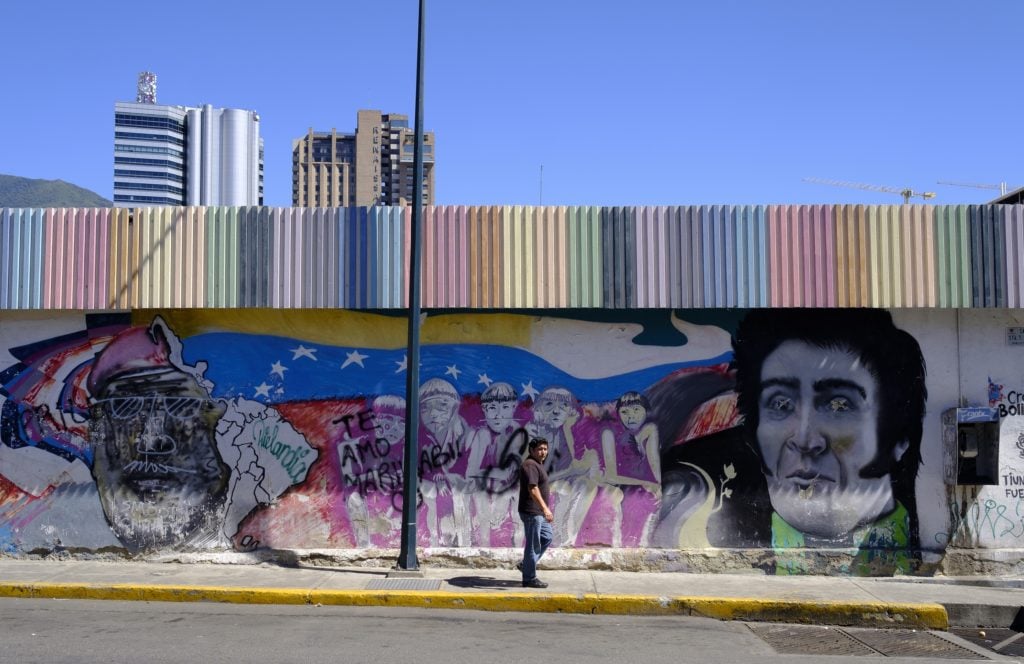
Propaganda drawings in a street of Caracas. Left is Hugo Chavez, and right Simón José Antonio de la Santísima Trinidad Bolívar y Palacios. (Photo by Thierry Monasse/Getty Images)
Because the political art scene has been and is so dominated by the chavista movement, the most underground and risky art in today’s Venezuela is work that refuses to use political imagery or play along with the old narrative.
Olivares’s decision to focus squarely on the benefits of the art has been particularly challenging over the past six months, since Juan Guaidó declared that he was the rightful president of Venezuela, openly challenging Maduro, who had been president since 2013. Since then, there have been violent clashes between opposition supporters and government forces and the long-suffering population—including its professional artists—has fallen even deeper into economic and social despair.
“The people of the barrios are disillusioned—both the government and the opposition love to talk about us or use us as talking points, but neither have done anything to make our lives better,” Olivares says. “If we chose to have exclusively pro-Maduro art, I’m sure we could have gotten some government money, and if there were murals of Juan Guaidó, some other interest group would have chipped in.”
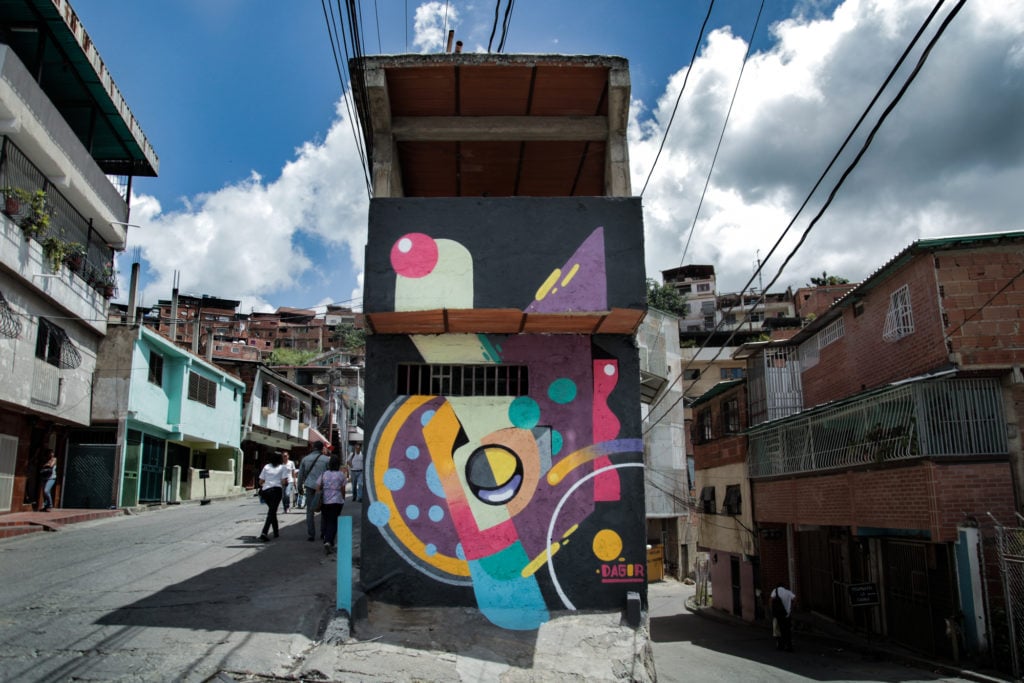
Street art in Petare. Photo: Annika Hernroth-Rothstein.
But Olivares wants no part in that polarization. “I don’t like the idea of this project forcing people to pick sides and thereby have even fewer options than they already do,” she says.
And while the Petare art project may be technically apolitical, the choice to keep it that way is politically charged in and of itself. And if it continues to succeed and other barrios follow, it could end up having even larger political ramifications. Olivares says that her neighbors and friends are already changing their mindset and seeing themselves as individual citizens rather than simply a people, at which point, she suspects, the government will end up having less and less power over them.
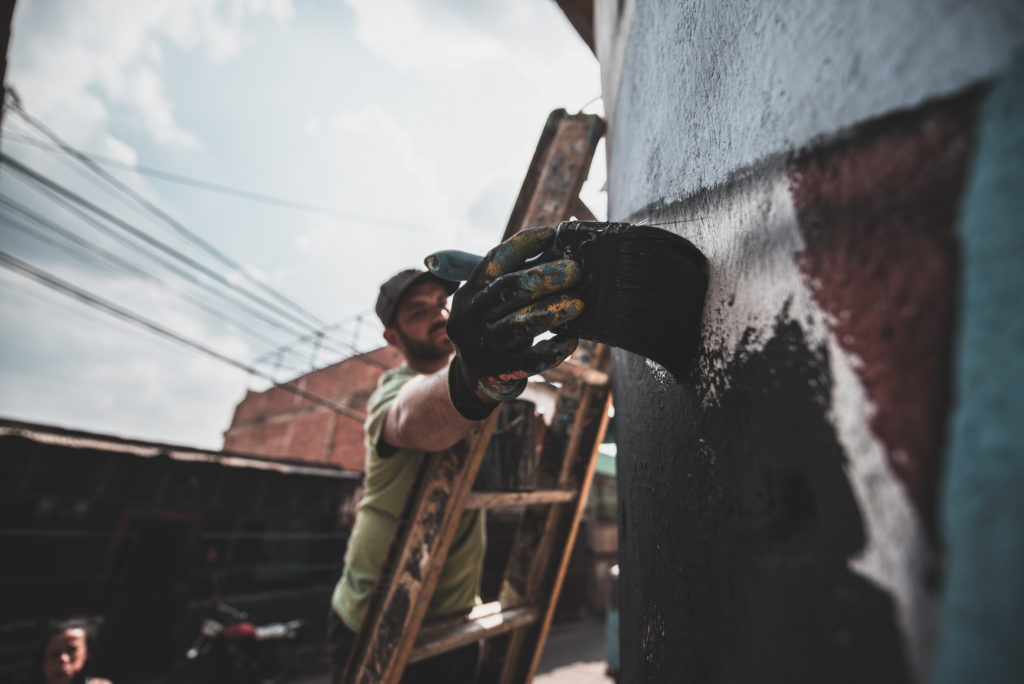
A street artist at work in Petare. Photo: Annika Hernroth-Rothstein.
For over 20 years, Venezuela has been stuck in a political and socio-economic crisis where politicians on both sides have mismanaged the country and betrayed the people’s trust. Venezuelans have been robbed of their power of self-determination and realization, Olivares says—and she sees her project as an important step in taking it back.
“I want to radically and peacefully change my beloved country,” she says, “and I plan to do it with art.”